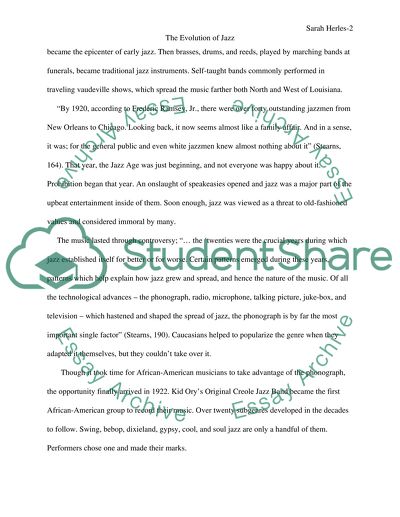The Evolution of Jazz Essay Example | Topics and Well Written Essays - 1000 words. Retrieved from https://studentshare.org/miscellaneous/1513353-the-evolution-of-jazz
The Evolution of Jazz Essay Example | Topics and Well Written Essays - 1000 Words. https://studentshare.org/miscellaneous/1513353-the-evolution-of-jazz.


